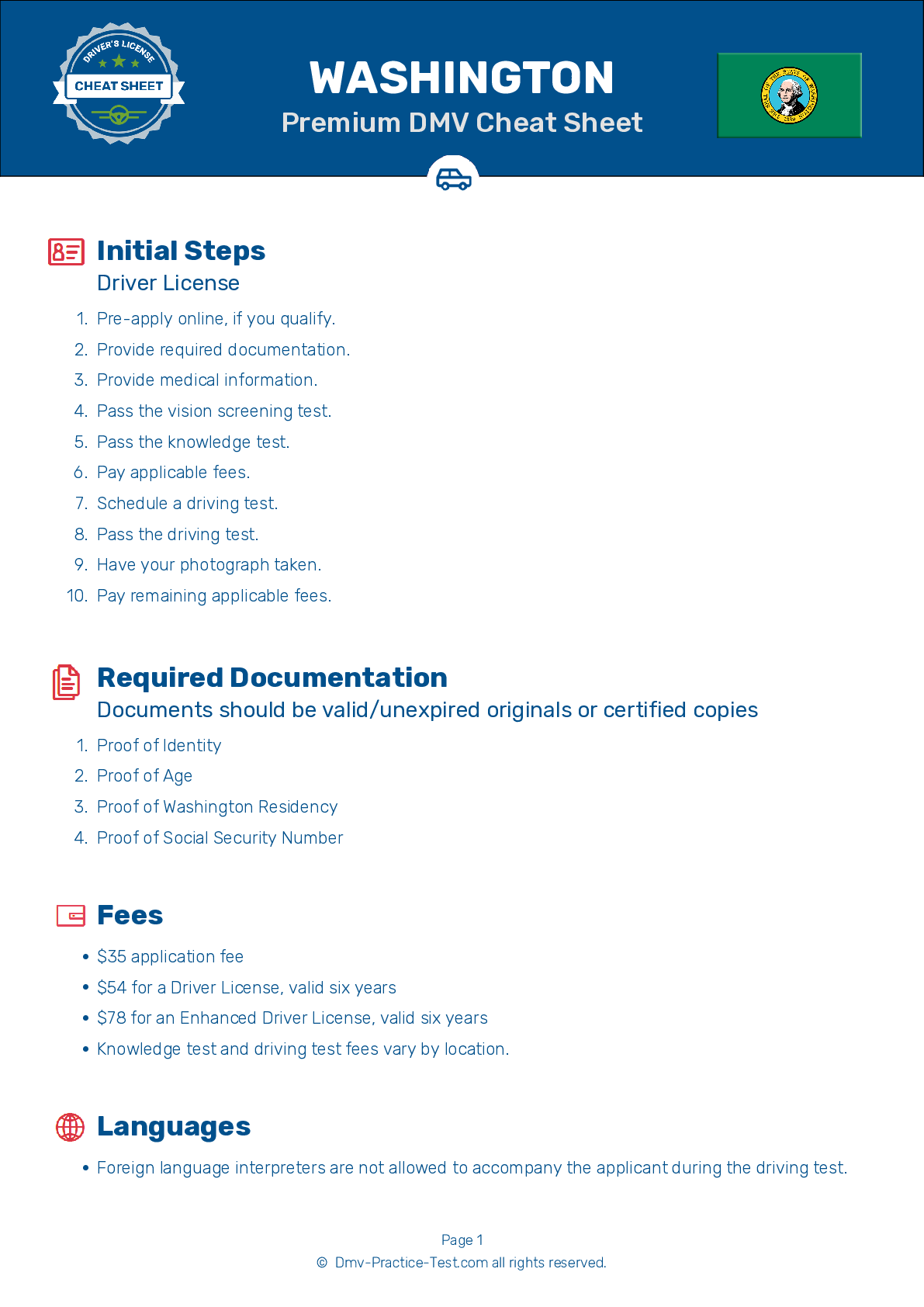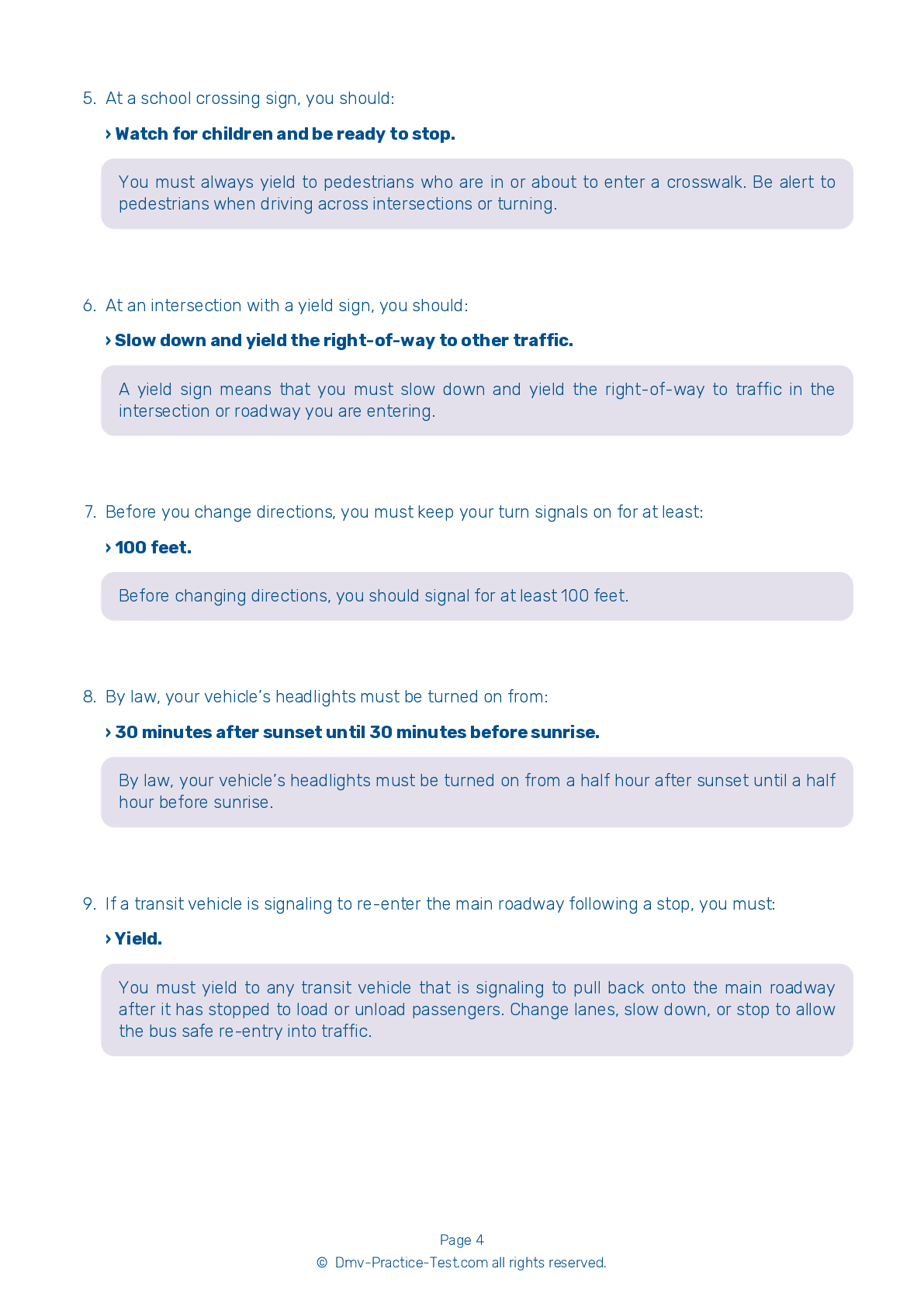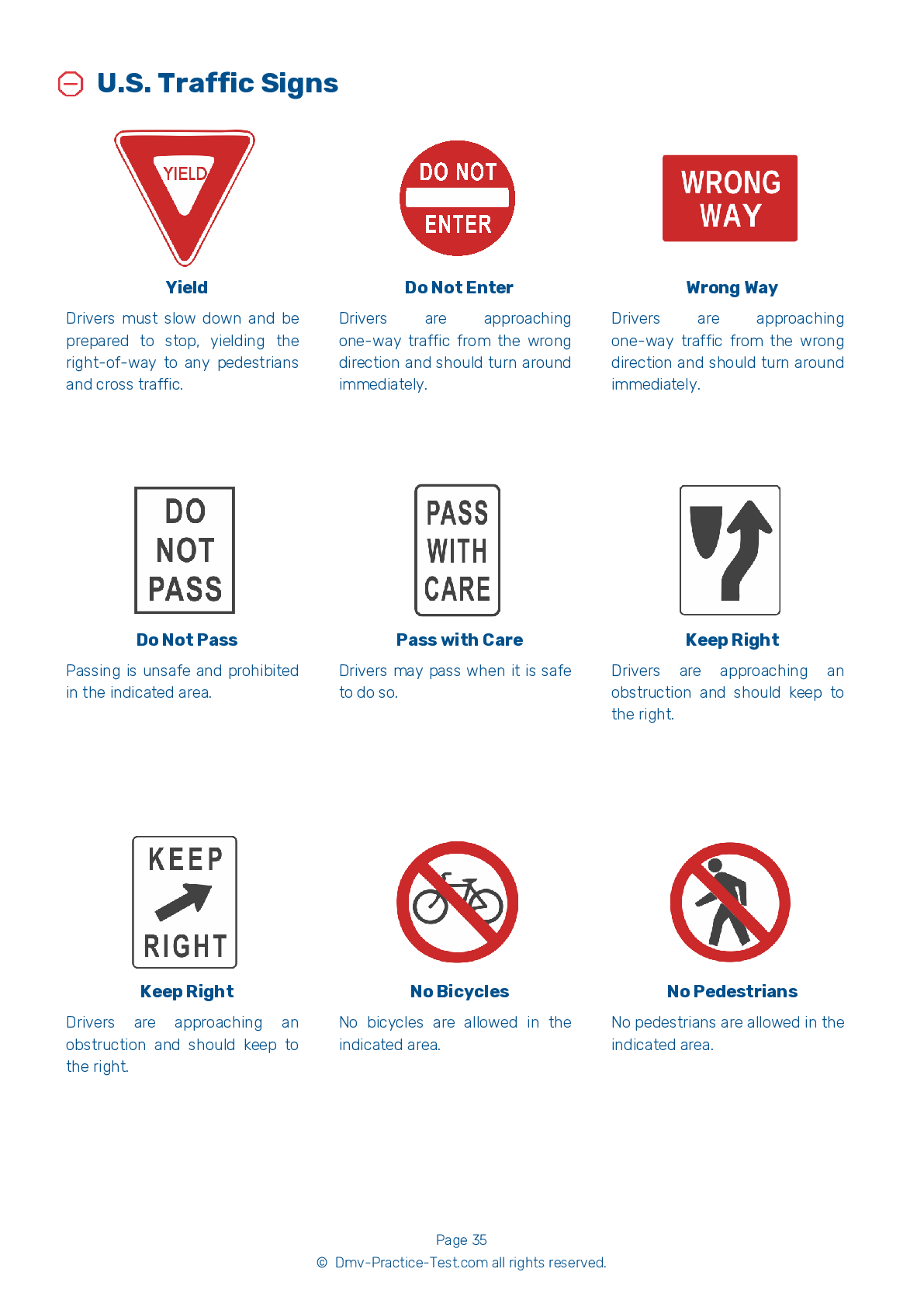FREE Washington DMV Practice Test #9 Page 4 of 4
The Washington DMV practise examinations have been updated for January 2025. It includes questions based on the Washington Driver Handbook's most significant traffic signals and legislation for 2025. Use actual questions that are very similar (often identical!) to the DMV driving permit test and driver's licence exam to study for the DMV driving permit test and driver's licence exam.
On the practise exam, each question gets a tip and explanation to help you remember the concepts. The written component of the official Washington DMV test will feature questions about traffic rules, traffic signs, and driving statutes, as well as knowledge from the Driver Handbook.
To obtain a passing grade, you must correctly answer 20 of the 25 questions. Use the practise exam provided by the Washington Department of Motor Vehicles to help you prepare for your instruction permit or driver's licence.
The DMV exam is available in several languages.
Using any kind of testing assistance will result in an automatic fail, and the DMV may take additional action against your driver's licence, so stay away from it.
19 . You are driving along a street and hear a siren. You cannot immediately see the emergency vehicle. You should:
If you hear a siren or an air horn close by but do not know exactly where the emergency vehicle is, safely pull over to the right side of the road and stop until you are sure it is not headed toward you.
20 . Your body gets rid of approximately:
The average person’s body will process about one alcoholic drink in one hour. However, many factors play a part in determining how impaired a person will become when consuming alcohol, including the amount of alcohol consumed, how fast it is consumed, and a person’s body weight, food intake, and general health.
21 . When you see a school bus traveling on the opposite side on a two-lane, two-way roadway, you must stop:
You must stop for a school bus that has its red lights flashing, whether it is the same or the opposite side of a two-lane road. You are not required to stop if the bus is on the opposite side of a road that has three or more marked traffic lanes, or that is divided by a median or physical barrier.
22 . To turn right, you should be in:
Any turn should be made from the lane that is closest to the direction you want to go, and into the lane closest to your previous lane.
23 . When you see other drivers around you acting or reacting in anger:
When other drivers are behaving angrily, you should take action to physically and mentally distance yourself from the situation. Avoid making eye contact with them, or making body movements or gestures that could provoke them. Slow down, move over, or do whatever you safely can to put yourself out of danger.
24 . Defensive driving is:
You drive defensively when you identify dangerous driving situations and take action before an accident occurs. Defensive driving helps prevent conflicts with aggressive, offensive, discourteous, careless, inattentive, impulsive, ignorant, or intoxicated drivers or pedestrians.
25 . Work zone signs mean:
Work zone signs are orange and indicate that some type of work is being performed on or alongside the roadway. Be extremely careful when you see these signs.
See the exact questions that will be on the 2025 Washington DMV exam.
99.2% of people who use the cheat sheet pass the FIRST TIME
LT gives us an insight on how the cheat sheet provided her with all the study questions she needed before taking her test.
Joe initially studied with the handbook and failed his test, he eventually found us online, studied and pass his test the first time around.
2025 Washington | Frequently Asked Questions
1. Complete a driver education course if you're under 15 ½.
2. Visit a driver licensing office.
3. Provide proof of identity, Social Security number, and residence.
4. Pass the knowledge test.
5. Pay the required fee.
6. If you're under 18, a parent or guardian must sign the application.
Remember, with a permit, you must always have an adult 21 years or older in the car with you.
1. Not checking mirrors and blind spots.
2. Incorrect signaling or forgetting to signal.
3. Lack of steering control.
4. Improper lane positioning and changing.
5. Not following traffic signs or signals.
6. Inadequate observation at intersections.
7. Speeding or driving too slowly.
8. Failing to yield the right of way where necessary.
Remember, practice is key to overcoming these errors.



